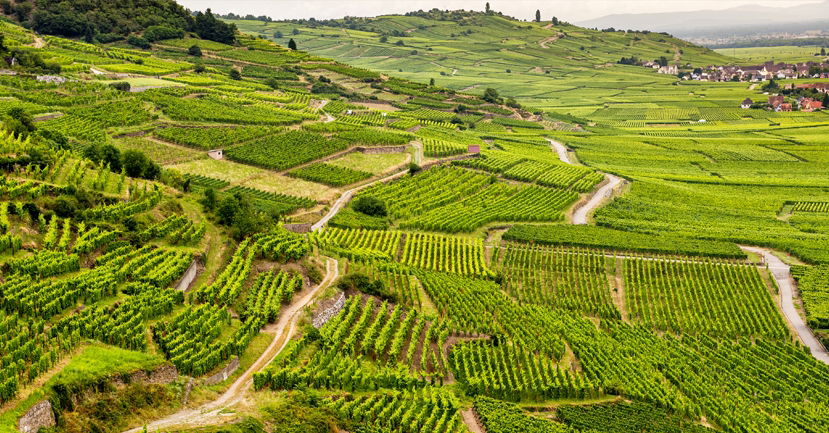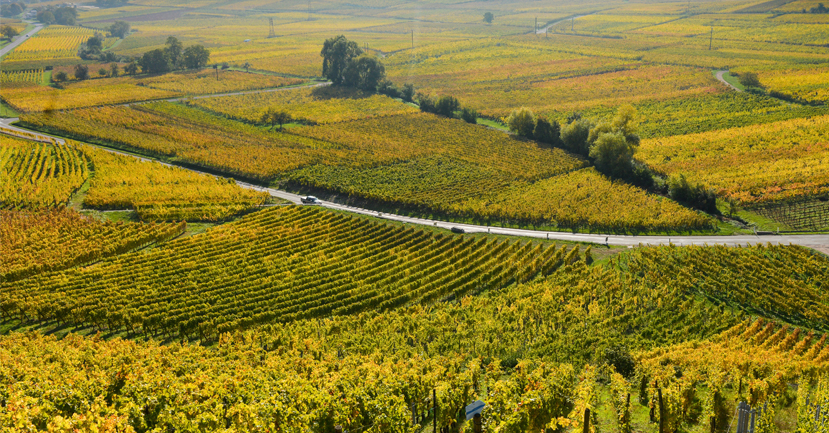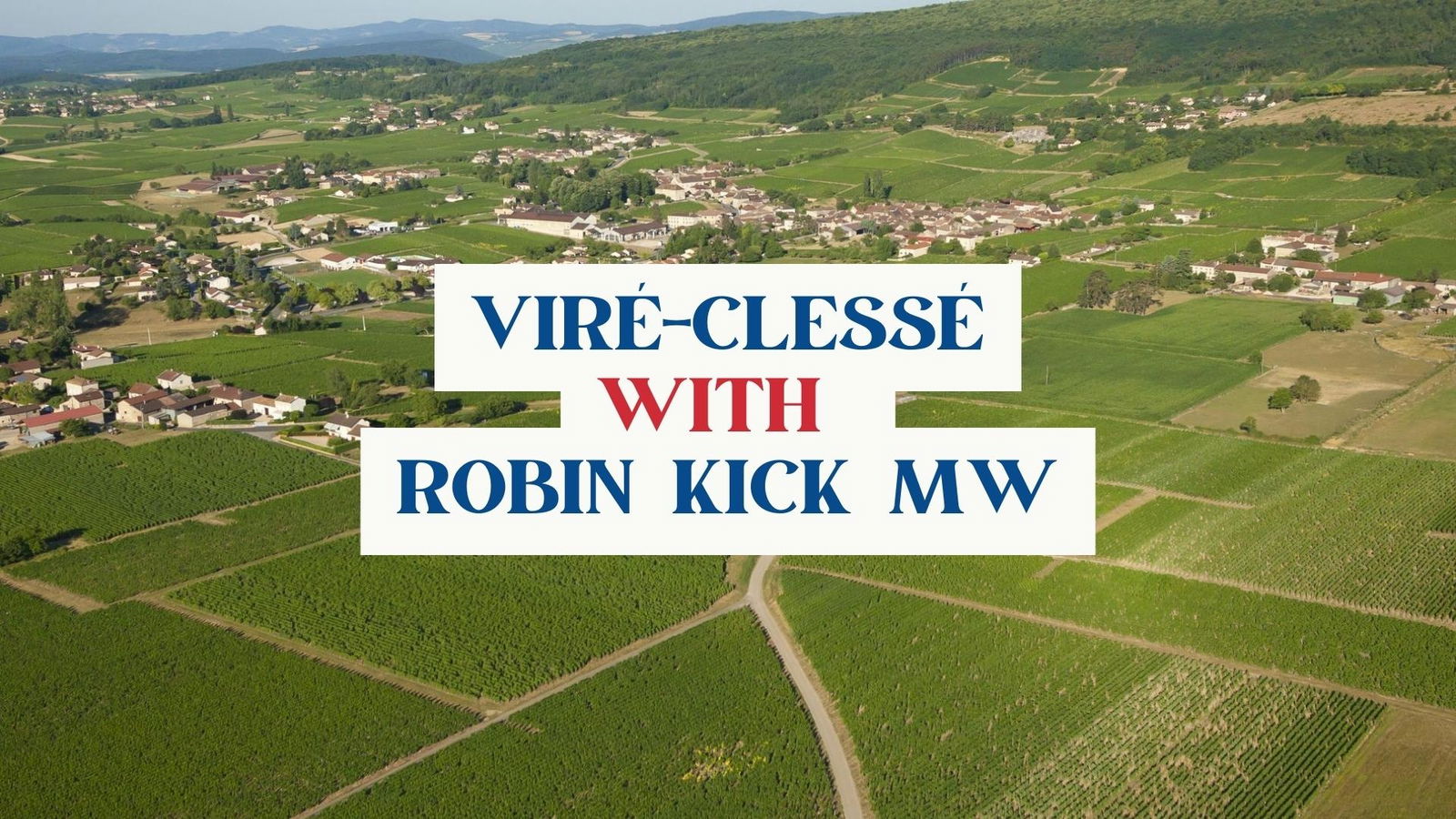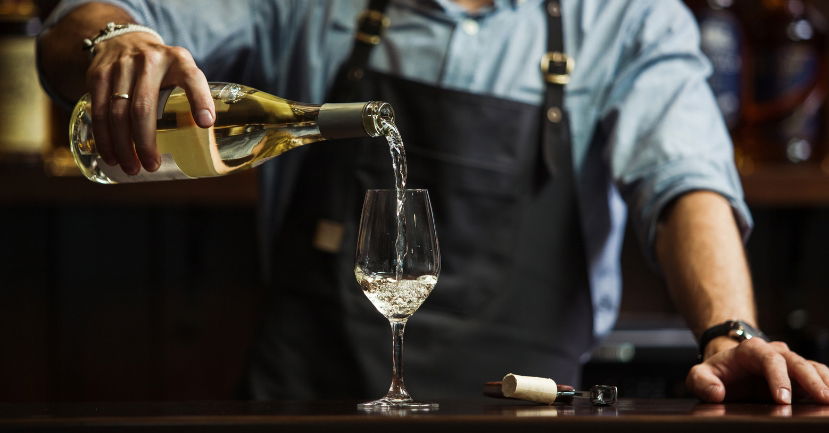BLOG
Wine Trends in 2020: Alsace by the Numbers
Andrew Jefford
Tasting & Trends

In the second part of our three-part series, acclaimed wine writer and Academic Advisor for the Wine Scholar Guild Andrew Jefford surveys the latest wine trends in Alsace. From larger vineyards to the prospect of Premier Crus — not to mention the impacts of climate change on the region’s bevy of varieties — let’s take a look at Alsace’s recent history and where the region as a whole is headed.
The Regional Economy and Wine Market
Vineyards are getting bigger in Alsace. While the actual amount of land under vine has remained remarkably consistent over the 10 years to 2017 (15,448 ha in 2007, 15,621 ha in 2017), the number of wine-growers declaring a harvest drops significantly each year (5,038 in 2007, 3,908 in 2017). The majority of Alsace growers either belong to a co-operative or sell their grapes to merchants; only 408 vinify all the fruit they harvest themselves.
In the Vineyard
The situation regarding Grands Crus and possible Premiers Crus continues to evolve in Alsace following the emergence of independent AOCs for each of the 51 Grands Crus in 2011 and the possibilities opened up at that time for self-governance and potential changes to the cahier des charges for each Grand Cru. The next anticipated changes concern the addition of Pinot Noir to the list of approved varieties for certain Grands Crus, rumoured to be imminent. (Pinot Noir is the Alsace variety for which plantings are expanding at the fastest rate at present, up 1.7% between 2017 and 2019.)
The three Grands Crus which submitted Pinot Noir dossiers back in 2016 are Hengst (where Albert Mann makes its Grand ‘H’), Kirchberg de Barr (from growers such as Vincent Stoeffler) and Vorbourg (which includes René Muré’s Clos St Landelin), so it would not be illogical to assume that these three will be the first to benefit from this extension. This change follows the extension of the Grand Cru Zotzenberg to Sylvaner in 2005.
The creation of Premiers Crus in Alsace is keenly awaited by many producers and enthusiastic consumers, and reports suggest that the idea has been accepted in principle by INAO. Protocols by which potential Premier Cru candidatures might be examined and accepted are being examined at present. Around 400 lieux-dits names are currently used each year in Alsace. Of these experts believe that perhaps 170 might eventually result in Premier Cru status.
The final tier between the ‘Alsace’ AOC and Premiers Crus is that of Communal appellations, but there have been no further additions to this list since the addition of Bergheim (for Gewurztraminer) and Coteaux du Haut-Koenigsbourg (for Riesling and Gewurztraminer) in 2014.
There are no plans to resolve ‘the Auxerrois anomaly’. Put most simply, this means that in the French AOC region best known for its varietal labelling, two genetically dissimilar varieties are sold under the name of only one of them. Pinot Blanc is a mutation of Pinot Noir, whereas Auxerrois is a Pinot Noir x Gouais Blanc cross. Wines labeled Pinot Blanc can contain Auxerrois, but not vice versa. Indeed most ‘Pinot Blanc’ is likely to contain more Auxerrois than Pinot Blanc, since there is more than twice as much Auxerrois as Pinot Blanc planted in Alsace — though you cannot tell this from the official planting figures, since (like the appellation system) these figures fail to distinguish between the two!
Organic and biodynamic vineyards are an Alsace speciality, with 2,230 ha of vineyards cultivated in this way (14.2% of total plantings), and 281 certified organic grape growers and wine producers (vignerons).

Global Warming
Alsace’s northerly position within France doesn’t mean that it is spared the effects of global warming. Average annual temperatures have exceeded the 20th-century average in every year so far of the 21st century, and peaks of 55°C are forecast for Eastern France by the century’s end. Average summer temperatures in Alsace vineyards have risen by two degrees centigrade over the past 35 years, and harvest dates have come forward by two to three weeks over the same period. Some experts believe that the longer day lengths in France’s more northerly vineyards during summer will mean that these vineyard regions are disproportionately affected by continuing warming.
Dry and Sweet Wines
Drinkers have for many years complained about unpredictable levels of sweetness in Alsace wines, and the region recognizes that this is problematic. Individual producers (such as Zind-Humbrecht and Meyer-Fonné) have used sweetness guides (Indice 1 = fully dry; Indice 5 = fully sweet) for many years, but the INAO discourages the use of these sweetness scales since they have no legal definitions or standing. In their place, CIVA (Conseil Interprofessionnel des Vins d’Alsace) and INAO have produced a descriptive system of their own.
Under the new system, it will be obligatory to use the term ‘Sec’ for all dry wines, defined as those wines with less than 4 g/l sugar or, if the level of acidity is over 7 g/l, less than 9 g/l of sugar. (Perception of sweetness relates to the level of acidity in a wine). The other descriptions are optional:
- Demi-Sec (defined as 4-12 g/l of sugar if the acidity level is below 8 g/l, or 9-18 g/l of sugar if the acidity is above 8 g/l)
- Moelleux (12-45 g/l of sugar, regardless of acidity)
- Doux (45 g/l or more of sugar, regardless of acidity).
It was initially hoped that this label stipulation would be in place for the 2017 harvest, but this did not occur; the latest plan is that it should be introduced from the 2020 harvest.



